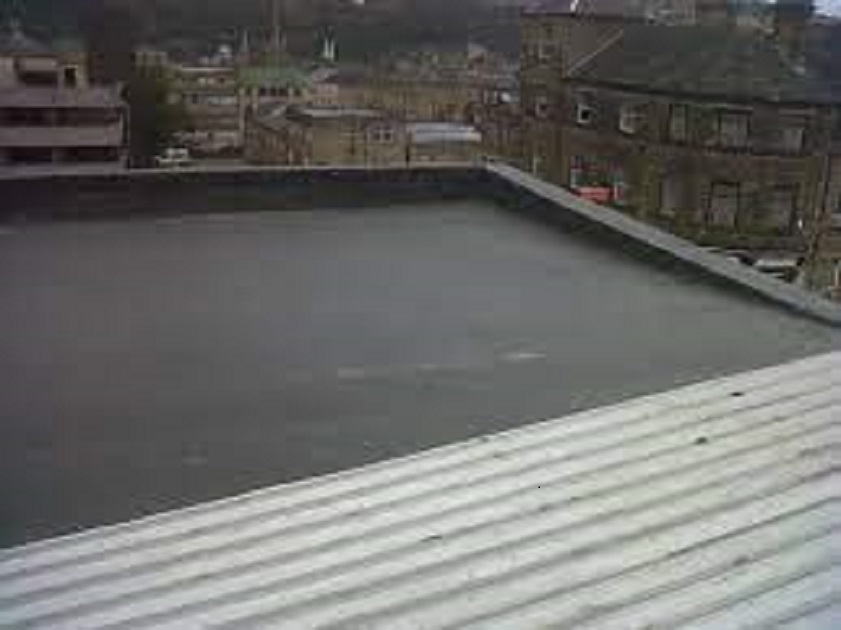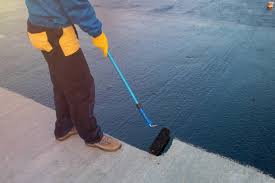What is a Rubber roofing for Sheds
A rubber roof for a shed is a durable roofing material that protects your structure from the elements and provides comfort and security to your family. Rubber roofing is an ideal alternative to metal, tile, and slate roofs because it resists mold, rot, pests, snow, and ice.
Because rubber is an elastic material, it stretches and compresses easily without damaging the underlying surfaces. Rubber roofs are also extremely long-lasting; with appropriate care, they may last up to 75 years. Rubber roofs can cover the roofs of sheds, garages, carports, and other similar structures. They are also waterproof and will not rot or mildew, which makes them an excellent choice for outdoor storage areas.
They also provide insulation and reduce heat loss, which can help keep your shed warmer in the winter and cooler in the summer. Rubber roofs are simple to install and maintain, and they will keep the weather out of your shed.
This article provides complete information and a guideline to the readers about the types of rubber roofing for sheds, their pros and cons, and their
Types of rubber roofing

There are several different types of rubber roofing. The three main types discussed in this article are EPDM, TPO, and PVC.
Each type has pros and cons, so it is essential to consider your options before making a final decision.
EPDM
EPDM is a rubber roofing material. It’s a blend of polyethylene and dimethylene, making it highly durable. Apart from it, EPDM makes it ideal for extreme weather conditions such as rain and snow. It’s also able to withstand temperatures of -40°F to 140°F (-40°C to 60°C).
That means it can handle everything from extreme heat to extreme cold. EPDM is a high-performance rubber roofing used for commercial and residential purposes. Because EPDM is made with two different kinds of rubber, it can perform different functions. One type is used for flexibility, while the other is for insulation.
Both of these properties makes it both flexible and resistant to heat and cold. Due to this, it is also an excellent roofing material.
It has excellent weather resistance, sound insulation, and low maintenance costs. However, EPDM-type rubber roofing is not appropriate for use in very hot or cold parts of the world because it can melt in these conditions.
TPO rubber roofing
TPO-type roofing is made from a combination of two materials: expanded polystyrene (EPS) and asphalt. It has the advantage of being lightweight, cheap, easy to install, and has a high resistance to fire and heat. However, it has been proven to have poor water-resistance properties due to its porous structure, making it unsuitable for use on buildings that need to be flooded during an emergency. TPO roofing is also prone to leaks when subjected to environmental conditions such as snow, wind, rain, and ice.
You should inspect the TPO roofing for any damage or potential leaks on a regular basis. It’s also advisable to avoid leaving your TPO roofing too exposed to direct sunlight. If you’re considering installing TPO roofing on your house, choose the suitable material that suits your building needs.
TPO roofing also offers excellent energy efficiency. It keeps the temperature inside your building from getting too hot or too cold, which saves you money on utility bills. Plus, they are good at reducing noise levels inside your building by minimizing the transmission of sound waves through the roof membrane.
PVC rubber roofing
PVC type roofing is a type of roofing material composed of PVC plastic. It’s also known as Polyvinyl chloride (PVC) or vinyl. This type of roofing is often used for flat roofs but can also be used on hip and gable roofs. This type of PVC roofing is solid and durable, making it the most popular type.
However, it’s not the best option for extreme heat and humidity areas because it can easily crack when exposed to high temperatures and humidity levels. Another disadvantage of PVC roofing is that it does not endure as long as other roofing materials. Because of this, you’ll need to replace your PVC roof every 20 years at the absolute least.
PVC rubber roofing is flexible, lightweight, and relatively easy to install. It is a popular choice for many homeowners because of its lightweight, easy installation, and low maintenance requirements.
Some of the disadvantages include its susceptibility to damage from UV exposure and high temperatures, which can cause the material to degrade over time. Because PVC rubber roofing is not as durable as other types of roofing material, it may be more expensive in the long run than other options.
PVC-type rubber roofing has a good appearance and waterproof capability.
What are the pros of the rubber roofing for sheds?

- Rubber roofing is one of the most reliable options for shed roofs because of its durability. Since rubber is waterproof, it can withstand many weather conditions and will not quickly deteriorate or tear.
- Rubber roofs are also non-toxic, so they are safe for your pets and children to play in.
- Rubber roofs are simple to install and don’t require any special tools or training.
- Rubber roofing is a great choice for shed owners who wish to maintain their roof safe and secure.
- Rubber roofing is a low-cost and environmentally beneficial option for protecting your shed from the weather. While it initially costs more than other materials, you can expect to save money over time by avoiding expensive repairs.
- Rubber roofing is extremely simple to install, and the costs of installation may be postponed. At the same time, you find the right location for your shed.
- A rubber roof is also energy efficient because it reduces building heat loss. By reducing your home’s energy use, you may save money on your power bills.
- Further, rubber roofs are resistant to hail storms, making them especially valuable in areas prone to severe weather conditions.
These great features make rubber roofing for sheds a popular choice among shed owners.
What are the cons of rubber roofing for sheds?
There are some disadvantages with the rubber roofing.
- Because rubber is a synthetic material, it may not be as durable as an asphalt or concrete roof. It is also more prone to leaks than a traditional roof.
- There are also concerns regarding the influence on the environment.
- Rubber roofs are made from trees, which means that they take up space and need to be harvested. Rubber roofs are also more expensive than asphalt or steel roofs.
- Also, there can be aesthetic issues with rubber roofs.
- While they may look attractive at first glance, they can fade over time and must be periodically resealed or re-coated.
- Rubber roofs are more expensive than traditional materials like asphalt, concrete, or fiberglass. To minimize mold and mildew damage, they must be cleaned and maintained on a regular basis.
- Rubber roofing also take time to apply and can be expensive to install.
- Rubber also requires maintenance and could start to deteriorate over time, requiring replacement.
- Lastly, rubber roofs can be challenging to clean and may require specialized equipment.
With all these drawbacks, weighing the pros against the cons is essential before choosing rubber roofing for sheds.
What is the least expensive roofing material for a shed?
If you’re looking for the least expensive roofing material for a shed, the most cost-effective option would be asphalt shingles. Asphalt shingles are affordable, easy to install, and widely available at most home improvement stores. They come in various colors and styles, making them a versatile choice for any shed design.
Another affordable option is metal roofing, which can be made from galvanized steel, aluminum, or corrugated metal. Metal roofing is lightweight, durable, and can last up to 50 years with proper maintenance. It is also fire-resistant, making it a safer choice for your shed. For a more natural look, consider using thatch roofing, which is made from dry vegetation such as straw, grass, or leaves. Thatch roofing is relatively inexpensive, but it requires more maintenance than other roofing materials, as it is susceptible to rot, mold, and pests. Finally, consider using rolled roofing, made from the same materials as asphalt shingles but thinner and comes in large rolls. Rolled roofing is easy to install, making it a popular choice for DIYers on a budget.
MSR roll roofing is often the least expensive material for a shed roof. Because roll roofing can swiftly cover huge areas by just rolling it out and nailing it down, it is also the most straightforward shed roof to erect.
The cost to install or replace a rubber roof typically ranges from $6,000 to $18,000, with the average price being close to $12,000. As you are aware, several variables, such as materials, labor, obstacles, and adaptations made to the roof, can impact the price.
Final Words
Rubber roofing is an excellent option for people who want to add roofing to an existing shed or gazebo, keeping in mind various factors like cost-effectiveness, efficiency for heat loss, eco-friendly, low energy transmission, less installation cost, etc. EPDM rubber roofing, as you can see from our list, has more advantages than most other roofing options. It’s a tough, long-lasting, and resistant material that’s easy to fix if something goes wrong.

